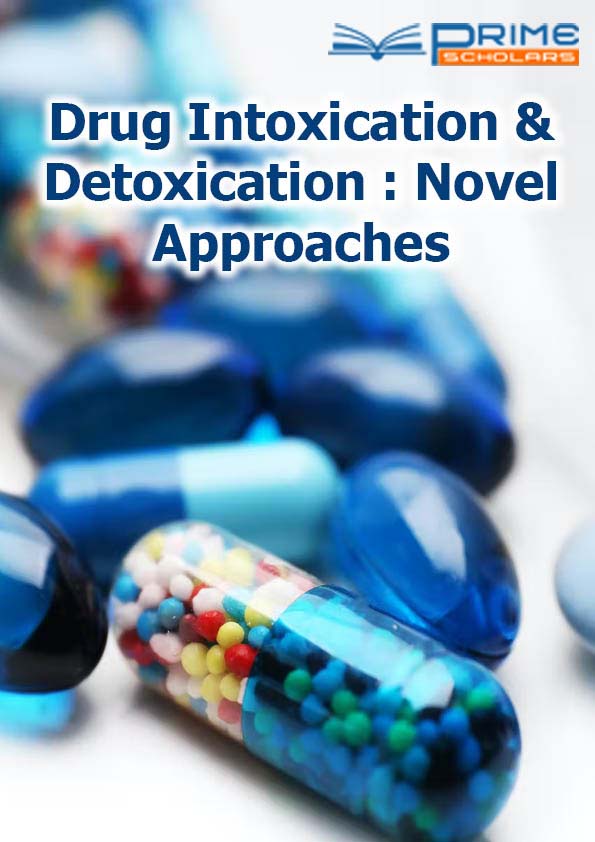Opinion - (2022) Volume 3, Issue 5
Vitro Effect of Codeine on Human by Inducing Sperm Dysmotility
Davinson Chuka*
Department of Drugs, University of Nigeria, Nigeria
*Correspondence:
Davinson Chuka,
Department of Drugs, University of Nigeria,
Nigeria,
Email:
Received: 30-Nov-2022, Manuscript No. DIDNA-22-15308;
Editor assigned: 02-Dec-2022, Pre QC No. DIDNA-22-15308 (PQ);
Reviewed: 16-Dec-2022, QC No. DIDNA-22-15308;
Revised: 21-Dec-2022, Manuscript No. DIDNA-22-15308 (R);
Published:
28-Dec-2022, DOI: 10.36648/DIDNA 3.5.21
INTRODUCTION
Drug abuse is on the rise worldwide. Among the commonly abused narcotics is codeine, which is the most commonly abused narcotic after weed. Useful use as analgesic and cough suppressant is not controversial, but improved tolerance in the short term of intended use leads to its abuse and coercion is harmful. Codeine has also been found to impair male fertility by masking circulating androgens and oxidative testicular and sperm damage. The aim of the ongoing review was to evaluate the effects of codeine on human sperm using an in vitro model.
Description
Sedative use adversely affected semen quality and sperm DNA in drug addicts through an oxidative stress-mediated pathway taking various tranquilizers. As a result, information touting the effects of codeine on human sperm is still lacking. Although standard semen testing remains the cornerstone for diagnos- ing male infertility, high-level semen research is lacking provide valuable nuances about the integrity of sperm DNA and detect unpretentious sperm termination that may be missed by routine measurements. Sperm motility is an essential requirement for sperm performance, including oocyte preparation. In order for the preparation to take place, sperm undergo capacitation. This is the time of formation during female conception when glycoproteins and basic plasma proteins are secreted from the sperm plasma membrane that covers the acrosomal site. Capac- itated sperm undergo an acrosome reaction involving assimila- tion of the zona pellucida by acrosin a serine protease. These cycles require ideal sperm motility. Subsequently, openness to particles armed to induce motility disturbances can override the limitation of sperm preparation. On the other hand, intact sperm DNA is critical for oocyte processing and gapless transfer of DNA. The association of sperm and DNA enables the transport of congested genetic material to the egg, ensuring that the DNA is transported in physiological structures that make the genetic material readily accessible to the resulting imma- ture organism. Therefore, damage to sperm DNA weakens the process of preparation and transfer of genetic material to the developing organism. Sperm are susceptible to oxidative stress due to the increased proportion of polyunsaturated lipids in the membrane. Also, during spermatogenesis, sperm extrude most of the cytoplasm, which contains catalysts for cancer prevention. These make them susceptible to lipid peroxidation, which adversely affects sperm motility and sperm DNA integrity. Usual etiologic variables of sperm oxidative pressure include leukocytes, elevated scrotal temperature, and susceptibility to toxins or drugs. Despite widespread codeine abuse and rising rates of male infertility, the effects of codeine on human sperm have yet to be studied. Clarification, and documented infertility, it remains unclear whether codeine has a similar effect on human sperm. We aimed to evaluate the in vitro effects of codeine on foci and the length of patency for sperm motility, adequacy, and DNA reliability in non-sacrificing solid-material normal sperm semen testing.
Conclusion
Codeine radically reduced sperm motility and plasma membrane integrity each time it was tried. However, the increase in 8-OHdG levels in sperm contrasted with controls in a temporally subordinate manner. Moreover codeine is particularly damaging to expanded sperm DNA. Research showed that sperm 8 OHdG levels adversely affected sperm motility and plasma membranes. Seriousness and integrity of DNA codeine may affect human sperm preparation margins by causing impaired sperm motility. Sperm plasma membrane and DNA damage by oxidative stress-dependent components.
Citation: Chuka D (2022) Vitro Effect of Codeine on Human by Inducing Sperm Dysmotility. Drug Intox Detox: Novel Approaches. 3:21.
Copyright: © 2022 Chuka D. This is an open-access article distributed under the terms of the Creative Commons Attribution Li- cense, which permits unrestricted use, distribution, and reproduction in any medium, provided the original author and source are credited.
